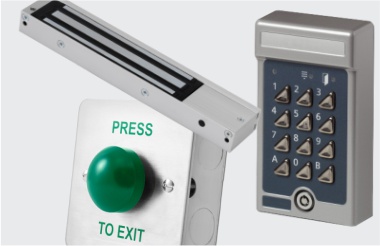Access control in healthcare - protecting patients and data
Access control is an essential consideration for any type of commercial business, but the healthcare sector has a range of unique risks and hazards which make the issue of security a complex management responsibility. Healthcare organisations can include hospitals, care homes, nursing homes, rehab centres, physiotherapy and radiography centres, occupational health centres, doctor’s surgeries and pharmacies. These have a range of different security needs, but in general, security is required to:
- Protect the safety and wellbeing of patients
- Protect the safety and wellbeing of staff
- Restrict access to drugs and medication
- Protect confidential information and data
- Ensure compliance with industry regulations and standards
The issue of security should be addressed via a comprehensive security plan, this should involve a risk assessment of the facility, in terms of buildings, people and operations. This should then appoint someone with overall management responsibility for security, and this should lead to security systems being implemented, audited and people being trained to use them. A key element of security in healthcare, however, is access control.
Where is access control needed in a healthcare facility?
Taking a hospital as an example, there can be multiple entry points to a healthcare facility, and also many different restricted areas. Hospitals are zoned off into different wards and different areas for accidents and emergency, intensive care, surgery, offices, pharmacies, specialist wards and then general wards. Within each of these there are restricted areas where patients require privacy, where staff require privacy, where access to medication or equipment needs to be restricted, or where access to data and information needs to be restricted.
Furthermore, hospitals are usually large buildings with several people coming in and out at all times of day. Hospitals generally have a front door which is always open and accessible, because the facility is open 24 hours a day, this makes access control important because the building is essentially a mixture between a public building and a private building with multiple areas and zones. So access control begins when people move between areas within the building and it is essential that this is managed and authorised properly. This can be patients, staff, support services and visitors. Hence a robust system of access control is required for:
- Patients – Patients will have identification attached to them at all times, although generally won’t be walking or moving freely around the facility. However, if they are able to and are authorised to, they will require access control to enter and exit their specific ward. This would usually be an identification badge incorporating a smart card. It should also be noted that some vulnerable patients will require management to prevent them leaving a healthcare facility, rather than accessing it, because they are not in a suitable physical condition to.
- Staff – ID badges/smart cards/keypad codes will be used by staff, which can enable them access only to the areas for which they have authority. So access to some wards or rooms (such as medication supplies) may be denied, based on their seniority or specific role. So access control is not necessarily for the front door of the facility, as with most businesses, and is more to move between departments and rooms within the building. This type of access control will be traceable, so that it is possible to monitor who has moved between departments and when, in order to manage efficiency and movement, but also possible security breaches.
- Visitors – Access for visitors in any healthcare facility is normally restricted to certain hours of the day, in order for patients to get sufficient rest and attention at other times, and to restrict how many members of the public have open access to the building, and for how long. So visitors would normally be monitored via a signing-in book, and they may be issued with a single-use temporary pass valid only for the duration of their visit, which identifies their basic level of authorisation.
- Data – Patient records such as test results, medical history, diagnosis and prescriptions are strictly confidential and need to be protected at all times. Physical records will be kept in access-controlled rooms, where access is enabled by smart cards, fobs and keypad codes, and managed by authority and status, while digital records held on PCs and laptops will be controlled by username and password systems.
However access control is managed in a healthcare facility, it is important that the system is robust and user-friendly. Essentially, access control needs to be self-managed and a seamless system which doesn’t interfere with the critical work going on within the facility, because staff are extremely busy and under severe pressure in most cases. So it is important that the right people have the right level of authorisation, and that where access needs to be restricted, this is managed by a strong and reliable system. But at the same time, it is essential that access control enables authorised people to move quickly and easily between rooms and departments to carry out the critical care required.
Access control systems from MB Direct
You can browse our range of access control systems and associated accessories at MB Direct, we can advise on the best systems and controls for your business if you contact us today, or you can order online directly.